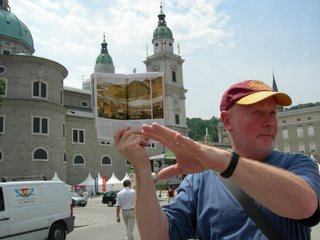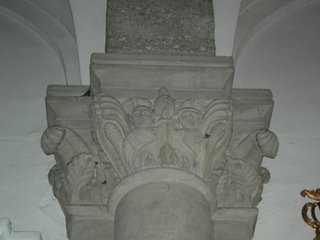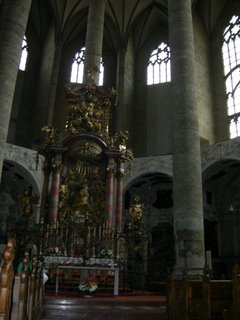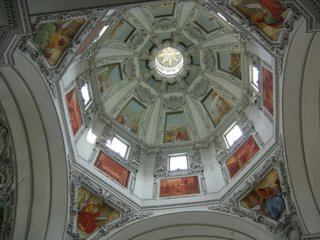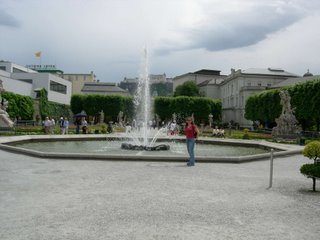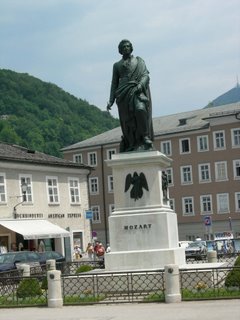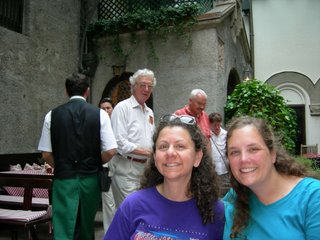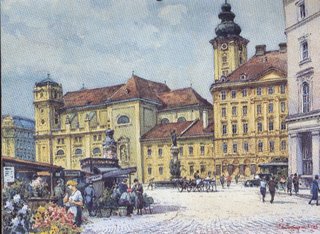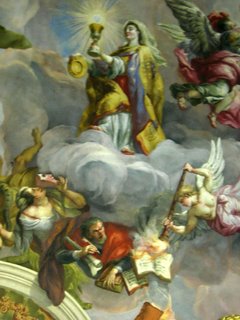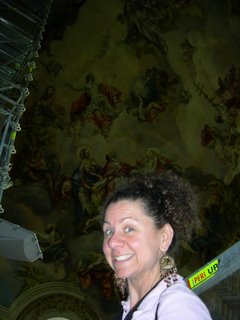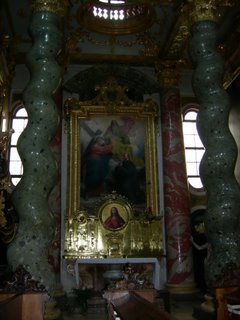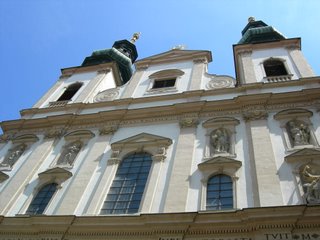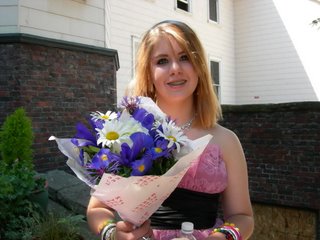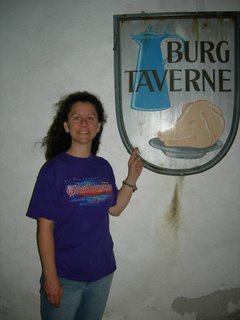
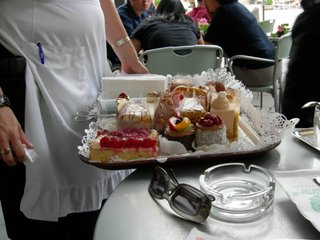
Viennese pastries, and a tavern (complete with severed pig head) with my name on it!
“I returned home and went to work. I sat down at my table and did not leave it for twelve hours continuous – a bottle of Tokay to my right, a box of Seville to my left, in the middle an inkwell. A beautiful girl of sixteen – I should have preferred to love her only as a daughter, but alas! … - was living in the house with her mother…and came to my room at the sound of the bell. To tell the truth I rang the bell rather frequently, especially at moments when I felt my inspiration wanting.”
-Lorenzo da Ponte, memoirs
This was the account that Lorenzo da Ponte wrote about composing the libretto for Don Giovanni while he was writing two other libretti for other operas at the same time. I went to the other Jewish museum today, but before that we went out to a restaurant called Firenze Enoteca. It was recommended in the guide as the best Italian restaurant in Vienna, and the guide said it was “moderately” priced, so we thought we’d go to get in the mood for Mozart’s Italian librettist.
So this restaurant turned out to be the favorite haunt of Pavarotti, Domingo, and Tom Cruise when they come to Vienna; their photos (and photos of many other international celebrities) cover the walls. A bottle of Pellegrino was about 9 dollars. My colleague Karen (we are doing a joint Don Giovanni project, which I think I mentioned) and I both ordered the pasta with tomato and Gorgonzola, a favorite of Pavarotti, and containing about 7 million calories.
The exhibit was fascinating. Da Ponte converted to Catholicism when he was 14, because his mother had died and his father remarried a Catholic woman. His original name had been Emanuele Conegliano, and he was born in a ghetto on the outskirts on Venice. He took the name Lorenzo da Ponte after the bishop who had been kind to him, entered the seminary and became a priest in 1773. However, in 1776 he gave a series of lectures on Rousseau, and also had an affair with a married woman (it wasn’t his first affair, evidently). The combination of political views and wild living (he was a priest, after all) led him to be condemned as having a “mala vita” and being kicked out of Venice.
He ended up in Vienna, the “city of tolerance” in 1781, and met Baron Wetzlar von Plankenstein, who was another Jewish convert, and one of Mozart’s great benefactors (and godfather to his first child). Mozart had been looking, supposedly, at over 100 librettos or plays to get some ideas (this was the opera that turned out to be Figaro) and when he and da Ponte hooked up it was magic.
Da Ponte had some issues with women throughout his life, particularly with a gal who was nicknamed “La Ferrarese,” a sort of mediocre opera singer (for whom the role of Fiordiligi was written in Cosi fan Tutte). Nobody else liked her after a while, and da Ponte got into trouble for his loyalty to her. Finally, right after Joseph II died, he left Vienna for Trieste and met his wife, Nancy, there. She was, interestingly enough, an English Jew, and he married her in some kind of service but nobody knows exactly what kind. There was a letter from one friend of his who claimed that they were actually married in a synagogue, and that was the end of his relationship with the Catholic Church. They had five kids together. Or maybe just four. After that, they emigrated to the US and ended up in New York, where I think I told you he founded the first opera house and also taught Italian literature at Columbia College.
There was a lot more fascinating information at the Jewish museum, and some amazing collections of loot from synagogues in Vienna, rescued the morning after Kristallnacht. They decided not to clean off the charring, in memory of the victims.
That reminds me: there is an amazing project that the Austrian government has funded here in Vienna, in memory of the individual Holocaust victims here. I have posted a link on the lower right; check it out. Da Ponte was an amazing character, and Jewish convert to Catholicism like me. I definitely have enjoyed learning about his life. Mary and I rounded out the day by ordering pizza and watching the World Cup in our room. What a life. Forza Italia! Dai Azzuri!
Tomorrow we are off to Prague for three days. Remember Chris Otto, the HOT architecture professor from Cornell? He's back, and he's taking us around Prague. Remind me to tell you about the martyrdom of St. Peter Nepomuk. And his miraculous tongue.
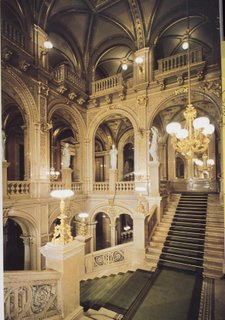

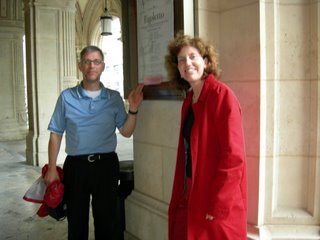
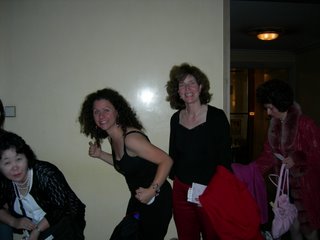
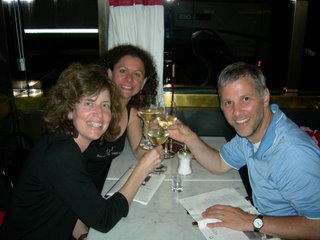


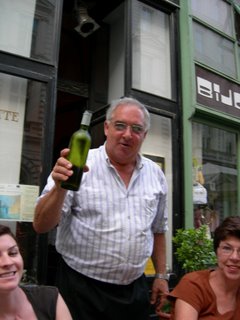

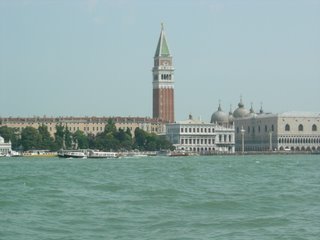

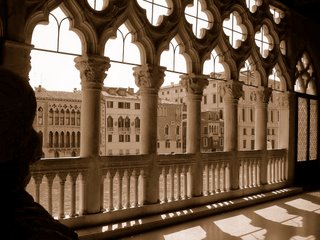
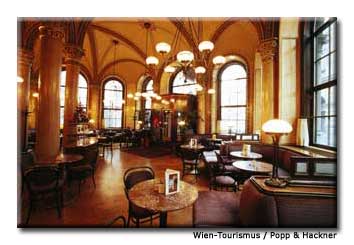
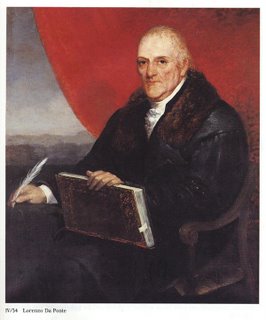
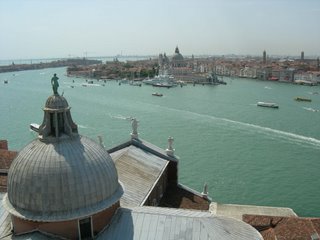

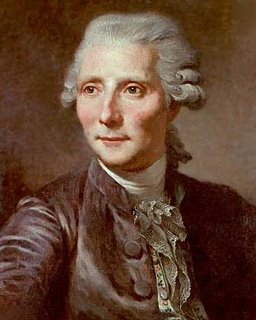
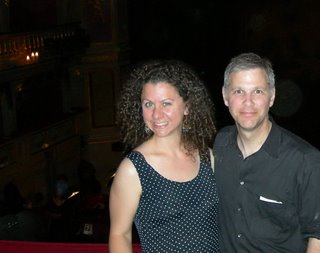
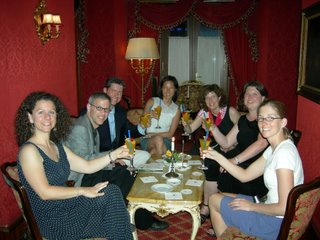
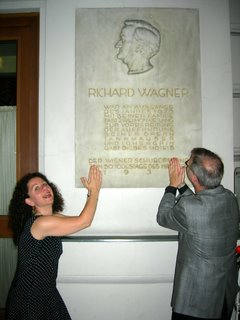


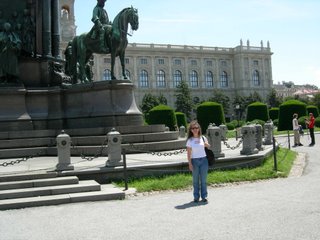
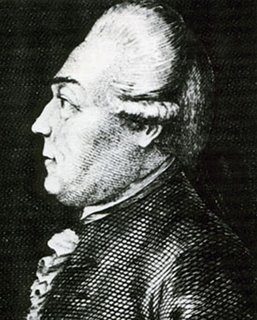
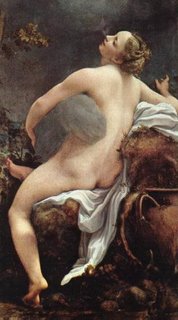
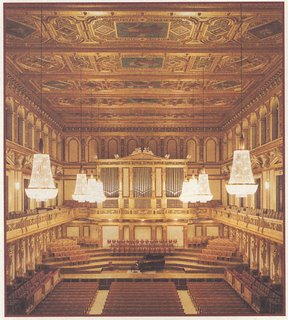
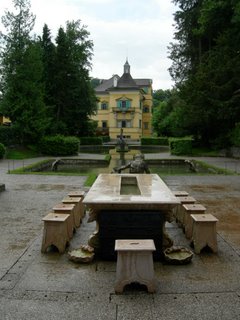 The archbishop was a big joker and he made this outdoor dining piazza, much like you would see at the Sparler/Schouten residence, but do you see those holes in the seats? While the guests were eating, looking at the lovely palace there in the background, drinking wine that had been cooled in the special water place right in the center of the table, one of the archbishop's servants would flip a switch and fountains of water would come up those holes right up the guests' butts! They wouldn't be able to stand up because you couldn't stand up before the archbishop stood up, according to the rules of court etiquette.
The archbishop was a big joker and he made this outdoor dining piazza, much like you would see at the Sparler/Schouten residence, but do you see those holes in the seats? While the guests were eating, looking at the lovely palace there in the background, drinking wine that had been cooled in the special water place right in the center of the table, one of the archbishop's servants would flip a switch and fountains of water would come up those holes right up the guests' butts! They wouldn't be able to stand up because you couldn't stand up before the archbishop stood up, according to the rules of court etiquette. 